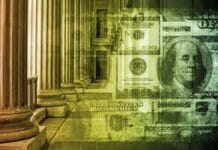Finney believed that Bitcoin would become high-powered money and serve as a reserve currency for the banks issuing their digital money. Non-profit organization LFG wants to buy USD 3 billion worth of BTC for its reserve, but its technical infrastructure is not ready yet.
Hal Finney, the first person to receive a BTC transaction from Satoshi Nakamoto, was a key developer for Bitcoin. Although he died of amyotrophic lateral sclerosis in 2014, his legacy still lives on.
In 2010, Finney wrote a message stating that he believed Bitcoin would become high-powered money. He said it would serve as a reserve currency for the banks that issued their digital money.
There is currently another prediction by Finney that might be coming true.
Twitter user Do Kwon, the founder of Terraform Labs, recently announced a USD 10 billion Bitcoin reserve would back TerraUSD (UST). That non-profit organization created the Terra protocol, which issues decentralized algorithmic stablecoins.
Although Terraform Labs is not a bank, it is issuing its digital money and is about to back its stablecoin in Bitcoin.
The Features and Purpose of Algorithmic Stablecoins
Stablecoins are centralized cryptocurrencies intended to remain stable in their value, generally pegged to the US dollar. They are of vital importance due to their wide use in trading cryptocurrencies.
The Tether stablecoin USDT currently makes up most of the global volumes of cryptocurrency operations. US Dollar-pegged stablecoins represent over USD 180 billion of the total market capitalization, according to data from CoinMarketCap.
Mainly real-world assets, specifically fiat currencies, are the ones that back popular stablecoins like USDT and USDC. However, there are also algorithmic stablecoins such as TerraUSD (UST).
Nothing guarantees or backs an algorithmic stablecoin, but its burning or minting aims to keep the value in line with the target price. In the case of UST, that is where LUNA comes in.
When the price of UST is above 1 US dollar, LUNA incentivizes users to burn LUNA and create UST. On the contrary, the protocol incentivizes users to destroy UST and mint LUNA when the value of UST is too low.
USD 10 Billion in Reserve Bitcoins for UST
The creation of the Luna Foundation Guard (LFG), a non-profit organization focused on promoting a decentralized economy, occurred recently. It primarily provides support in case the UST/LUNA incentive mechanism fails.
The LFG initially wanted to buy USD 3 billion worth of BTC. Of that amount, they have already raised USD 2.2 billion through USD 1 billion from external funding and USD 1.2 billion from the sale of USDT.
On Twitter, Do Kwon added that the reserve on the platform could rise to USD 10 billion in BTC.
He said they currently have USD 3 billion in funds ready to increase this BTC reserve. However, he pointed out that the technical infrastructure is not ready yet.
If the strategy of Do Kwon succeeds, a fully auditable, transparent, and decentralized digital asset could back UST. It would not be necessary to trust a guarantee or an accounting firm that qualifies it. Anyone would be able to verify and observe it directly on the blockchain.
If that happens, the prediction of Hal Finney, a pivotal figure in the history of Bitcoin, and the vision of Nakamoto will come true.
By Alexander Salazar











